Artificial Intelligence-Based Software as a Medical Device (AI-SaMD): A Systematic Review
Abstract
1. Introduction
2. AI-SaMD Architecture
3. Research Approach
3.1. Question Formulation
3.2. Search Strategy
3.3. Source Selection
- PubMed;
- Semantic Scholar;
- SpringerLink;
- Web of Science (WoS);
- IEEE Explore.
3.4. Study Selection
- Exclude papers unrelated to AI-SaMD, as it is the primary focus.
- Exclude MS/PhD theses, posters, technical reports, and commentary articles.
- Exclude duplicate studies.
- Exclude non-peer-reviewed studies, such as those from preprint repositories.
3.5. Information Extraction
4. Results and Discussion
4.1. Analysis of Publication Venues and Source Types (RQ1)
4.2. Demographic Trends (RQ2)
4.3. Analysis Based on Research Strategy and Clinical Environment (RQ3.1 and 3.2)
4.4. Analysis Based on Challenges (RQ4)
4.4.1. Regulatory Frameworks Around the World (Challenges 1 and 6)
4.4.2. AI Model (Challenges 2 and 3)
4.4.3. Human-Centric Factors (Challenge 9)
4.4.4. Data Governance (Challenges 4 and 5)
4.5. Analysis on Researcher Recommendations (RQ5)
5. Limitations and Future Work
6. Conclusions
Author Contributions
Funding
Institutional Review Board Statement
Informed Consent Statement
Data Availability Statement
Acknowledgments
Conflicts of Interest
Appendix A. Data Extraction Form
| Section 1: Paper information | |
| Author | Author(s) of the study |
| Name | Title of the study |
| Type | Publication types: journal, conference, workshop, or symposium |
| Country | The place of the study |
| Year | The year of the study |
| Section 2: Quality assessment | |
| The rationale for the study in the introduction clear? | Yes/No |
| The design/methodology of the study appropriate? | Yes/No |
| The findings and results of study are clearly stated? | Yes/No |
| The findings of the study are evaluated properly? | Yes/No |
| Section 3: Data extraction | |
| Methodology | It can be either practical or non-practical. If the study relies on observation, it is practical; otherwise, it is non-practical. Experiments, simulations, and real-world case studies are examples of practical studies, while reviews, theoretical analyses, surveys, and questionnaires are examples of non-practical studies. |
| Objective | Objectives/aims of the study. |
| Challenges in implementation of AI-SaMD | List the difficulties that researchers and clinicians often face when using AI-SaMD. |
| Quality attribute | The AI-SaMD quality attributes that were supposed to be measured and validated (e.g., safety). |
| Measure | The metrics and validation approaches used to measure considered quality attributes. |
| Context | It includes the specific types of clinics and diseases targeted by the studies. |
| Data analysis | Whether quantitative or qualitative. |
| Results | The subjective results of the study. |
References
- IMDRF SaMD Working Group. Software as a Medical Device (SaMD): Key Definitions. International Medical Device Regulators Forum (IMDRF), December 2013. Available online: https://www.imdrf.org/sites/default/files/docs/imdrf/final/technical/imdrf-tech-131209-samd-key-definitions-140901.pdf (accessed on 30 March 2025).
- Yaskevich, V. Ultimate Guide to Software as a Medical Device. 2023. Available online: https://www.elinext.com/industries/healthcare/trends/samd-guide-to-software-as-a-medical-device (accessed on 30 March 2025).
- Pozza, A.; Zanella, L.; Castaldi, B.; Di Salvo, G. How Will Artificial Intelligence Shape the Future of Decision-Making in Congenital Heart Disease? J. Clin. Med. 2024, 13, 2996. [Google Scholar] [CrossRef] [PubMed]
- The Konverge Team. From Code to Cure: The Potential of Software as a Medical Device. 2023. Available online: https://www.konverge.com/blog/general/code-to-cure-potential-software-medical-device-samd (accessed on 30 March 2025).
- Kou, Q. The Landscape of FDA-Approved Artificial Intelligence and Machine Learning (AI/ML)-Enabled Medical Devices. NyquistAI, 19 July 2024. Available online: https://nyquistai.com/the-landscape-of-fda-approved-artificial-intelligence-and-machine-learning-ai-ml-enabled-medical-devices (accessed on 30 March 2025).
- Laurie, G.; Dove, E.; Ganguli-Mitra, A.; McMillan, C.; Postan, E.; Sethi, N.; Sorbie, A. The Cambridge Handbook of Health Research Regulation; Cambridge University Press: Cambridge, UK, 2021. [Google Scholar] [CrossRef]
- Sommerville, I. Software Engineering, 10th ed.; Pearson: Essex, UK, 2015. [Google Scholar]
- Ebad, S.A. Healthcare software design and implementation—A project failure case. Softw. Pract. Exp. 2020, 50, 1258–1276. [Google Scholar] [CrossRef]
- Ebad, S.A.; Darem, A.A.; Abawajy, J.H. Measuring software obfuscation quality—A systematic literature review. IEEE Access 2021, 9, 99024–99038. [Google Scholar]
- Page, M.J.; McKenzie, J.E.; Bossuyt, P.M.; Boutron, I.; Hoffmann, T.C.; Mulrow, C.D.; Shamseer, L.; Tetzlaff, J.M.; Akl, E.A.; Brennan, S.E.; et al. The PRISMA 2020 statement: An updated guideline for reporting systematic reviews. BMJ 2021, 372, n71. [Google Scholar] [CrossRef]
- Ishizuka, N. Statistical review of regulatory requirements for AI diagnosis. In Proceedings of the IEEE 48th Annual Computers, Software, and Applications Conference (COMPSAC), Osaka, Japan, 2–4 July 2024. [Google Scholar]
- Ramachandran, A.; Malhotra, P.; Soni, D. Current Regulatory Landscape of Software as Medical Device in India: Framework for Way Forward. In Proceedings of the 10th International Conference on Computing for Sustainable Global Development (INDIACom), New Delhi, India, 15–17 March 2023. [Google Scholar]
- Gerke, S.; Babic, B.; Evgeniou, T.; Cohen, I.G. The need for a system view to regulate artificial intelligence/machine learning-based software as medical device. npj Digit. Med. 2020, 3, 53. [Google Scholar]
- Gunasekeran, D.V.; Zheng, F.; Lim, G.Y.S.; Chong, C.C.Y.; Zhang, S.; Ng, W.Y.; Keel, S.; Xiang, Y.; Park, K.H.; Park, S.J. Acceptance and Perception of Artificial Intelligence Usability in Eye Care (APPRAISE) for Ophthalmologists: A Multinational Perspective. Front. Med. 2022, 9, 875242. [Google Scholar]
- Campbell, J.P.; Chiang, M.F.; Chen, J.S.; Moshfeghi, D.M.; Nudleman, E.; Ruambivoonsuk, P.; Cherwek, H.; Cheung, C.Y.; Singh, P.; Kalpathy-Cramer, J. Artificial Intelligence for Retinopathy of Prematurity: Validation of a Vascular Severity Scale against International Expert Diagnosis. Ophthalmology 2022, 129, e69–e76. [Google Scholar]
- Hedderich, D.M.; Weisstanner, C.; Van Cauter, S.; Federau, C.; Edjlali, M.; Radbruch, A.; Gerke, S.; Haller, S. Artificial intelligence tools in clinical neuroradiology: Essential medico-legal aspects. Neuroradiology 2023, 65, 1091–1099. [Google Scholar]
- Moglia, A.; Georgiou, K.; Morelli, L.; Toutouzas, K.; Satava, R.M.; Cuschieri, A. Breaking down the silos of artificial intelligence in surgery: Glossary of terms. Surg. Endosc. 2022, 36, 7986–7997. [Google Scholar] [CrossRef]
- Zinchenko, V.; Chetverikov, S.; Akhmad, E.; Arzamasov, K.; Vladzymyrskyy, A.; Andreychenko, A.; Morozov, S. Changes in software as a medical device based on artificial intelligence technologies. Int. J. Comput. Assist. Radiol. Surg. 2022, 17, 1969–1977. [Google Scholar]
- O'Driscoll, F.; O'Brien, N.; Guo, C.; Prime, M.; Darzi, A.; Ghafur, S. Clinical Simulation in the Regulation of Software as a Medical Device: An eDelphi Study. JMIR Form. Res. 2024, 8, e56241. [Google Scholar] [PubMed]
- Parums, D.V. Editorial: Global Initiatives Support the Use and Regulation of Digital Health Technology During the COVID-19 Pandemic. Med. Sci. Monit. 2021, 27, e935123. [Google Scholar] [CrossRef] [PubMed]
- Palaniappan, K.; Lin, E.Y.T.; Vogel, S. Global Regulatory Frameworks for the Use of Artificial Intelligence (AI) in the Healthcare Services Sector. Healthcare 2024, 12, 562. [Google Scholar] [CrossRef] [PubMed]
- Ho, C.W.L. Implementing the human right to science in the regulatory governance of artificial intelligence in healthcare. J. Law Biosci. 2023, 10, lsad026. [Google Scholar]
- Smith, J.A.; Abhari, R.E.; Hussain, Z.; Heneghan, C.; Collins, G.S.; Carr, A.J. Industry ties and evidence in public comments on the FDA framework for modifications to artificial intelligence/machine learning-based medical devices: A cross sectional study. BMJ Open 2020, 10, e039969. [Google Scholar]
- Zinchenko, V.V.; Arzamasov, K.M.; Chetverikov, S.F.; Maltsev, A.V.; Novik, V.P.; Akhmad, E.S.; Sharova, D.E.; Andreychenko, A.E.; Vladzymyrskyy, A.V.; Morozov, S.P. Methodology for Conducting Post-Marketing Surveillance of Software as a Medical Device Based on Artificial Intelligence Technologies. Sovrem. Tehnol. V Med. 2022, 14, 15–23. [Google Scholar]
- Lee, C.J.; Rim, T.H.; Kang, H.G.; Yi, J.K.; Lee, G.; Yu, M.; Park, S.H.; Hwang, J.T.; Tham, Y.C.; Wong, T.Y.; et al. Pivotal trial of a deep-learning-based retinal biomarker (Reti-CVD) in the prediction of cardiovascular disease: Data from CMERC-HI. J. Am. Med. Inform. Assoc. 2023, 31, 130–138. [Google Scholar] [CrossRef]
- Carolan, J.E.; McGonigle, J.; Dennis, A.; Lorgelly, P.; Banerjee, A. Technology-Enabled, Evidence-Driven, and Patient-Centered: The Way Forward for Regulating Software as a Medical Device. JMIR Med. Inform. 2022, 10, e34038. [Google Scholar]
- Giansanti, D. The Regulation of Artificial Intelligence in Digital Radiology in the Scientific Literature: A Narrative Review of Reviews. Healthcare 2022, 10, 1824. [Google Scholar] [CrossRef]
- Angehrn, Z.; Haldna, L.; Zandvliet, A.S.; Gil Berglund, E.; Zeeuw, J.; Amzal, B.; Cheung, S.Y.A.; Polasek, T.M.; Pfister, M.; Kerbusch, T.; et al. Artificial Intelligence and Machine Learning Applied at the Point of Care. Front. Pharmacol. 2020, 11, 759. [Google Scholar] [CrossRef]
- Muthamilselvan, S.; Baabum, R.S.P.; Palaniappan, A. Microfluidics for Profiling miRNA Biomarker Panels in AI-Assisted Cancer Diagnosis and Prognosis. Appl. Microfluid. Cancer Res. 2023, 22, 15330338231185284. [Google Scholar]
- Arora, A. Conceptualising Artificial Intelligence as a Digital Healthcare Innovation: An Introductory Review. Med. Devices Evid. Res. 2020, 13, 223–230. [Google Scholar] [CrossRef] [PubMed]
- Shimron, E.; Perlman, O. AI in MRI: Computational Frameworks for a Faster, Optimized, and Automated Imaging Workflow. Bioengineering 2023, 10, 492. [Google Scholar] [CrossRef]
- Zapata, K.A.C.; Patil, R.; Ward, T.; Loughran, R.; McCaffery, F. Analysis of the Classification of Medical Device Software in the AI Act Proposal. In Proceedings of the Workshops at the Second International Conference on Hybrid Human-Artificial Intelligence (HHAI-WS 2023), Munich, Germany, 26–27 June 2023. [Google Scholar]
- Waissengrin, B.; Garasimov, A.; Bainhoren, O.; Merimsky, O.; Shamai, S.; Erental, A.; Wolf, I.; Hershkovitz, D. Artificial intelligence (AI) molecular analysis tool assists in rapid treatment decision in lung cancer: A case report. J. Clin. Pathol. 2023, 76, 790–792. [Google Scholar] [CrossRef]
- Ganapathy, K. Artificial Intelligence and Healthcare Regulatory and Legal Concerns. Telehealth Med. Today 2021, 6, 252. [Google Scholar] [CrossRef]
- Woodside, J.M.; Florida, D. Decision-Making Model Transparency for SaMD Machine Learning Algorithms. In Proceedings of the Conference on Information Systems Applied Research (ISCAP), Virtual Conference, 2020; Available online: https://iscap.us/proceedings/conisar/2020/pdf/5351.pdf (accessed on 30 March 2025).
- Haneef, R.; Delnord, M.; Vernay, M.; Bauchet, E.; Gaidelyte, R.; Van Oyen, H.; Or, Z.; Pérez-Gómez, B.; Palmieri, L.; Achterberg, P.; et al. Innovative use of data sources: A cross-sectional study of data linkage and artificial intelligence practices across European countries. Arch. Public Health 2020, 78, 55. [Google Scholar]
- Ingvar, Å.; Oloruntoba, A.; Sashindranath, M.; Miller, R.; Soyer, H.P.; Guitera, P.; Caccetta, T.; Shumack, S.; Abbott, L.; Arnold, C. Minimum labeling requirements for dermatology artificial intelligence-based Software as Medical Device (SaMD): A consensus statement. Aust. J. Dermatol. 2023, 65, e21–e29. [Google Scholar]
- Dortche, K.; Mccarthy, G.; Banbury, S.; Yannatos, I. Promoting Health Equity through Improved Regulation of Artificial Intelligence Medical Devices. J. Sci. Policy Gov. 2023, 21. [Google Scholar] [CrossRef]
- Park, S.H.; Choi, J.I.; Fournier, L.; Vasey, B. Randomized Clinical Trials of Artificial Intelligence in Medicine: Why, When, and How? Korean J. Radiol. 2022, 23, 1119–1125. [Google Scholar]
- Lal, A.; Dang, J.; Nabzdyk, C.; Gajic, O.; Herasevich, V. Regulatory oversight and ethical concerns surrounding software as medical device (SaMD) and digital twin technology in healthcare. Ann. Transl. Med. 2022, 10, 950. [Google Scholar]
- Suravarapu, S.T.; Yetukuri, K. Software Programmes Employed as Medical Devices. World J. Curr. Med. Pharm. Res. 2023, 5, 67–74. [Google Scholar]
- Hwang, E.J.; Goo, J.M.; Yoon, S.H.; Beck, K.S.; Seo, J.B.; Choi, B.W.; Chung, M.J.; Park, C.M.; Jin, K.N.; Lee, S.M. Use of Artificial Intelligence-Based Software as Medical Devices for Chest Radiography: A Position Paper from the Korean Society of Thoracic Radiology. Korean J. Radiol. 2021, 22, 1743–1748. [Google Scholar] [PubMed]
- Calvin, W.L.H. When Learning Is Continuous: Bridging the Research–Therapy Divide in the Regulatory Governance of Artificial Intelligence as Medical Devices. In The Cambridge Handbook of Health Research Regulation; Cambridge University Press: Cambridge, UK, 2021. [Google Scholar] [CrossRef]
- Chothani, F.; Movaliya, V.; Vaghela, K.; Zaveri, M.; Deshpande, S.; Kanki, N. Regulatory Prospective on Software as a Medical Device. Int. J. Drug Regul. Aff. 2022, 10, 13–17. [Google Scholar]
- Rathod, J.K.A.; Bhavani, N.; Saldanha, P.P.; Rao, P.M.; Patil, P. A Review of Current Applications of Artificial Intelligence and Machine Learning in Medical Science. Int. J. Adv. Res. Sci. Commun. Technol. 2021, 11. [Google Scholar] [CrossRef]
- Petzold, A.; Albrecht, P.; Balcer, L.; Bekkers, E.; Brandt, A.U.; Calabresi, P.A.; Deborah, O.G.; Graves, J.S.; Green, A.; Keane, P.A.; et al. Artificial intelligence extension of the OSCAR-IB criteria. Ann. Clin. Transl. Neurol. 2021, 8, 1528–1542. [Google Scholar]
- Battista, P.; Nemni, R.; Vitali, P.; Alì, M.; Zanardo, M.; Salvatore, C.; Sirabian, G.; Capelli, D.; Bet, L.; Callus, E.; et al. Alzheimer’s Dementia Early Diagnosis, Characterization, Prognosis and Treatment Decision via A Software-As-Medical Device With An Artificial Intelligent Agent. Alzheimer Dement. 2023, 19, e075674. [Google Scholar]
- Thompson, Y.L.E.; Sahiner, B.; Li, Q.; Petrick, N.; Delfino, J.G.; Lago, M.A.; Cao, Q.; Samuelson, F.W. Applying Queueing Theory to Evaluate Wait-Time-Savings of Triage Algorithms. Queueing Syst. 2024, 108, 579–610. [Google Scholar]
- Megerian, J.T.; Dey, S.; Melmed, R.D.; Coury, D.L.; Lerner, M.; Nicholls, C.J.; Sohl, K.; Rouhbakhsh, R.; Narasimhan, A.; Romain, J.; et al. Evaluation of an artificial intelligence-based medical device for diagnosis of autism spectrum disorder. npj Digit. Med. 2022, 5, 57. [Google Scholar] [CrossRef]
- Askin, S.; Burkhalter, D.; Calado, G.; El Dakrouni, S. Artificial Intelligence Applied to clinical trials: Opportunities and challenges. Health Technol. 2023, 13, 203–213. [Google Scholar]
- Loftus, T.J.; Shickel, B.; Ozrazgat-Baslanti, T.; Ren, Y.; Glicksberg, B.S.; Cao, J.; Singh, K.; Chan, L.; Nadkarni, G.N.; Bihorac, M.A. Artificial intelligence-enabled decision support in nephrology. Nat. Rev. Nephrol. 2023, 18, 452–465. [Google Scholar]
- Rassi-Cruz, M.; Valente, F.; Caniza, M.V. Digital therapeutics and the need for regulation: How to develop products that are innovative, patient-centric and safe. Diabetol. Metab. Syndr. 2022, 14, 48. [Google Scholar] [CrossRef] [PubMed]
- Rakugi, H. Healthy 100-year life in hypertensive patients: Messages from the 45th Annual Meeting of the Japanese Society of Hypertension. Hypertens. Res. 2024, 47, 1–3. [Google Scholar] [CrossRef] [PubMed]
- Miller, M.I.; Shih, L.C.; Kolachalama, V.B. Machine Learning in Clinical Trials: A Primer with Applications to Neurology. Neurotherapeutics 2023, 20, 1066–1080. [Google Scholar] [CrossRef] [PubMed]
- Berliner, L. Minimizing possible negative effects of artificial intelligence. Int. J. Comput. Assist. Radiol. Surg. 2024, 19, 1473–1476. [Google Scholar] [CrossRef]
- Zhou, K.; Gattinger, G. The Evolving Regulatory Paradigm of AI in MedTech: A Review of Perspectives and Where We Are Today. Ther. Innov. Regul. Sci. 2024, 58, 456–464. [Google Scholar] [CrossRef]
- He, J.; Baxter, S.L.; Xu, J.; Xu, J.; Zhou, X.; Zhang, K. The practical implementation of artificial intelligence technologies in medicine. Nat. Med. 2019, 25, 30–36. [Google Scholar] [CrossRef]
- Cerdá-Alberich, L.; Solana, J.; Mallol, P.; Ribas, G.; García-Junco, M.; Alberich-Bayarri, A.; Marti-Bonmati, L. MAIC–10 brief quality checklist for publications using artificial intelligence and medical images. Insights Imaging 2023, 14, 11. [Google Scholar] [CrossRef]
- Agrawal, A.; Khatri, G.D.; Khurana, B.; Sodickson, A.D.; Liang, Y.; Dreizin, D. A survey of ASER members on artificial intelligence in emergency radiology: Trends, perceptions, and expectations. Emerg. Radiol. 2023, 30, 267–277. [Google Scholar] [CrossRef]
- Dreizin, D.; Staziaki, P.V.; Khatri, G.D.; Beckmann, N.M.; Feng, Z.; Liang, Y.; Delproposto, Z.S.; Klug, M.; Spann, J.S.; Sarkar, N.; et al. Artificial intelligence CAD tools in trauma imaging: A scoping review from the American Society of Emergency Radiology (ASER) AI/ML Expert Panel. Emerg. Radiol. 2023, 30, 251–265. [Google Scholar] [CrossRef]
- Woodman, R.J.; Mangoni, A.A. A comprehensive review of machine learning algorithms and their application in geriatric medicine: Present and future. Aging Clin. Exp. Res. 2023, 35, 2363–2397. [Google Scholar] [CrossRef]
- Tettey, F.; Parupelli, S.K.; Desai, S. A Review of Biomedical Devices: Classification, Regulatory Guidelines, Human Factors, Software as a Medical Device, and Cybersecurity. Biomed. Mater. Devices 2023, 2, 316–341. [Google Scholar]
- Hwang, E.J.; Park, J.E.; Song, K.D.; Yang, D.H.; Kim, K.W.; Lee, J.G.; Yoon, J.H.; Han, K.; Kim, D.H. 2023 Survey on User Experience of Artificial Intelligence Software in Radiology by the Korean Society of Radiology. Korean J. Radiol. 2023, 25, 613–622. [Google Scholar] [CrossRef] [PubMed]
- Feng, J.; Emerson, S.; Simon, N. Approval policies for modifications to machine learning-based software as a medical device: A study of bio-creep. Biom. Methodol. 2019, 77, 31–44. [Google Scholar]
- Herington, J.; McCradden, M.D.; Creel, M.K.; Boellaard, R.; Jones, E.C.; Jha, A.K.; Rahmim, A.; Scott, P.J.H.; Sunderland, J.J.; Wahl, R.L.; et al. Ethical Considerations for Artificial Intelligence in Medical Imaging: Deployment and Governance. J. Nucl. Med. 2023, 64, 1509–1515. [Google Scholar] [CrossRef]
- Dickinson, H.; Feifel, J.; Muylle, K.; Ochi, T.; Vallejo-Yagüe, E. Learning with an evolving medicine label: How artificial intelligence-based medication recommendation systems must adapt to changing medication labels. Expert Opin. Drug Saf. 2024, 23, 547–552. [Google Scholar] [CrossRef]
- Li, P.; Williams, R.; Gilbert, S.; Anderson, S. Regulating Artificial Intelligence and Machine Learning-Enabled Medical Devices in Europe and the United Kingdom. Law Technol. Hum. 2023, 5, 94–113. [Google Scholar] [CrossRef]
- Oloruntoba, A.; Ingvar, Å.; Sashindranath, M.; Anthony, O.; Abbott, L.; Guitera, P.; Caccetta, T.; Janda, M.; Soyer, H.P.; Mar, V. Examining labelling guidelines for AI-based software as a medical device: A review and analysis of dermatology mobile applications in Australia. Aust. J. Dermatol. 2023, 65, 409–422. [Google Scholar] [CrossRef]
- Miller, D.D. Machine Intelligence in Cardiovascular Medicine. Cardiol. Rev. 2020, 28, 53–64. [Google Scholar]
- Hua, D.; Petrina, N.; Young, N.; Cho, J.G.; Poon, S.K. Understanding the factors influencing acceptability of AI in medical imaging domains among healthcare professionals: A scoping review. Artif. Intell. Med. 2024, 147, 102698. [Google Scholar]
- Lim, K.; Heo, T.Y.; Yun, J. Trends in the Approval and Quality Management of Artificial Intelligence Medical Devices in the Republic of Korea. Diagnostics 2022, 12, 355. [Google Scholar] [CrossRef]
- Humayun, M.; Niazi, M.; Jhanjhi, N.Z.; Alshayeb, M.; Mahmood, S. Cyber Security Threats and Vulnerabilities: A Systematic Mapping Study. Arab. J. Sci. Eng. 2020, 45, 2341–2369. [Google Scholar]
- Ebad, S.A. The influencing causes of software unavailability: A case study from industry. Softw. Pract. Exp. 2018, 48, 1056–1076. [Google Scholar] [CrossRef]
- Komatsu, M.; Teraya, N.; Natsume, T.; Harada, N.; Takeda, K.; Hamamoto, R. Clinical Application of Artificial Intelligence in Ultrasound Imaging for Oncology. JMA J. 2024, 8, 18–25. [Google Scholar] [PubMed]
- United States Copyright Office. Copyrightable authorship: What can be registered. In Compendium of U.S. Copyright Office Practices §101, 3rd ed.; United States Copyright Office: Washington, DC, USA, 2021; pp. 4–39. Available online: https://www.copyright.gov/comp3/chap300/ch300-copyrightable-authorship.pdf (accessed on 30 March 2025).
- Medicines and Healthcare Products Regulatory Agency. Regulating Medical Devices in the UK. 2024. Available online: https://www.gov.uk/guidance/regulating-medical-devices-in-the-uk (accessed on 30 March 2025).
- Van Raamsdonk, A. Swiss Regulators Set to Recognize US FDA-Cleared or Approved Medical Devices. 2022. Available online: https://www.emergobyul.com/news/swiss-regulators-set-recognize-us-fda-cleared-or-approved-medical-devices (accessed on 30 March 2025).
- Babic, B.; Gerke, S.; Evgeniou, T.; Cohen, I.G. Beware explanations from AI in health care. Science 2021, 373, 284–286. [Google Scholar] [CrossRef]
- Vogel, D.A. Medical Device Software Verification, Validation, and Compliance; Artech House: London, UK, 2011. [Google Scholar]
- Mezrich, J.L.; Siegel, E. Who owns the image? Archiving and retention issues in the digital age. J. Am. Coll. Radiol. 2014, 11, 384–386. [Google Scholar] [CrossRef]
- White, T.; Blok, E.; Calhoun, V.D. Data sharing and privacy issues in neuroimaging research: Opportunities, obstacles, challenges, and monsters under the bed. Hum. Brain Mapp. 2022, 43, 278–291. [Google Scholar] [CrossRef]
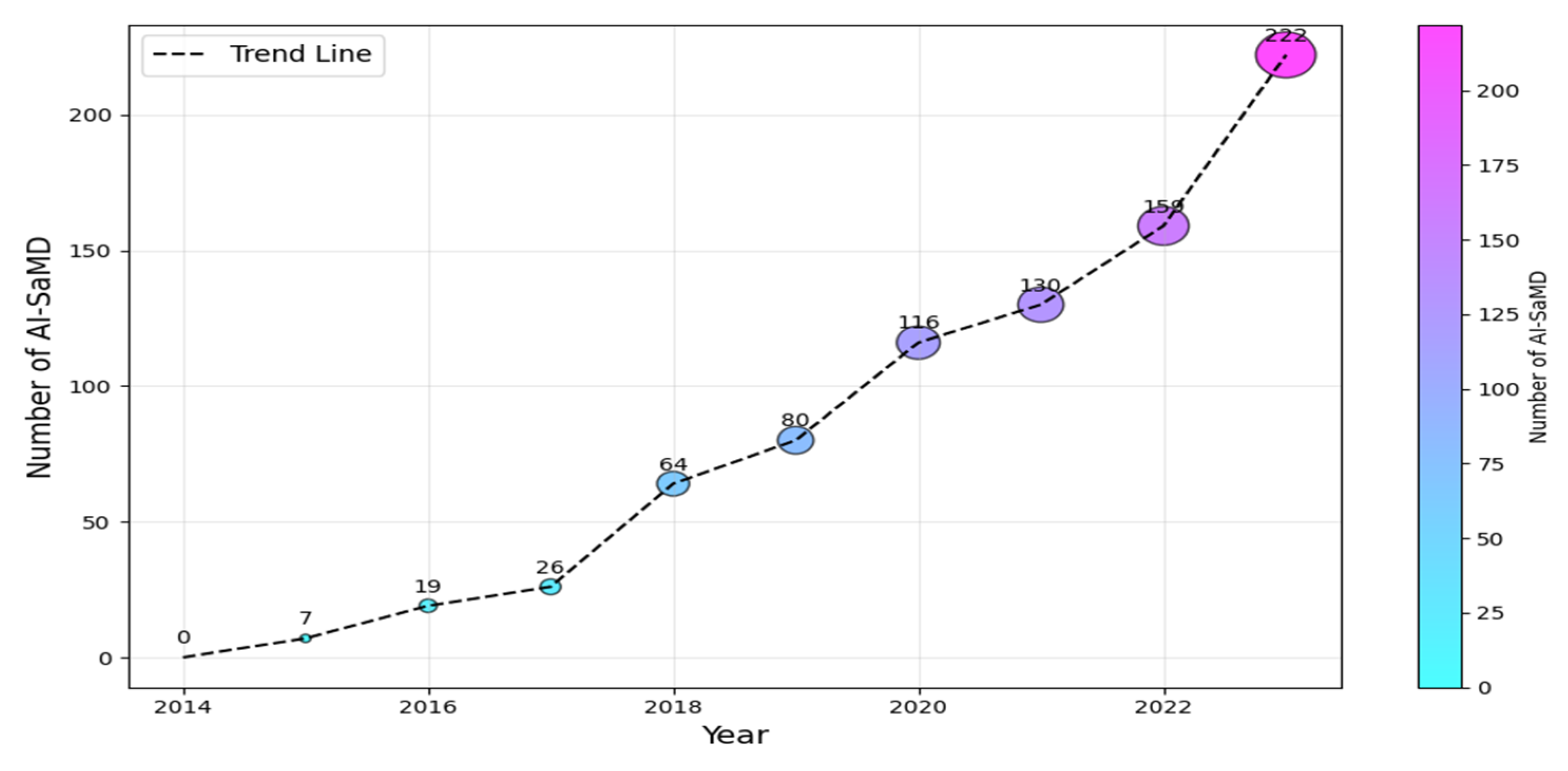
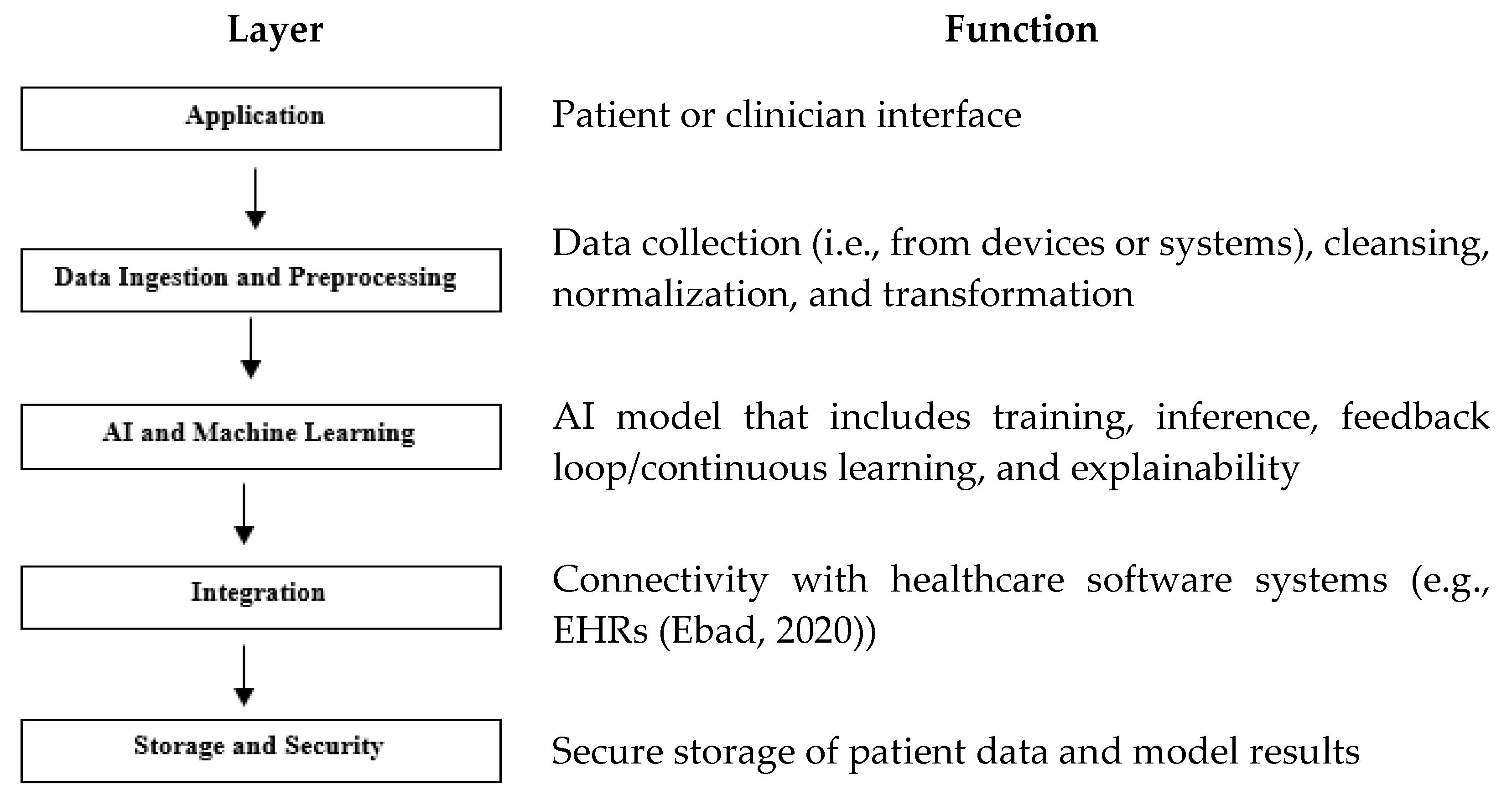

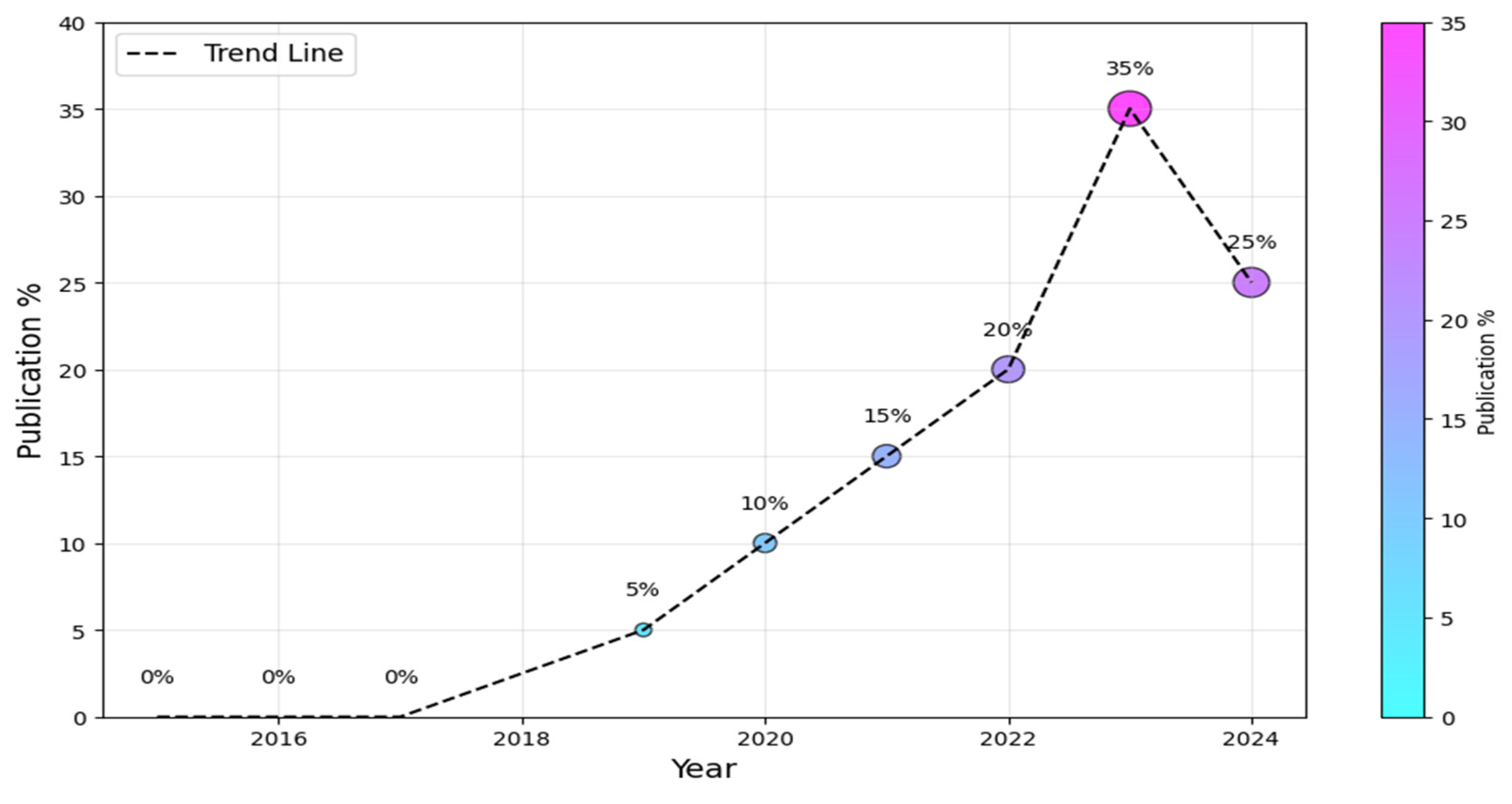

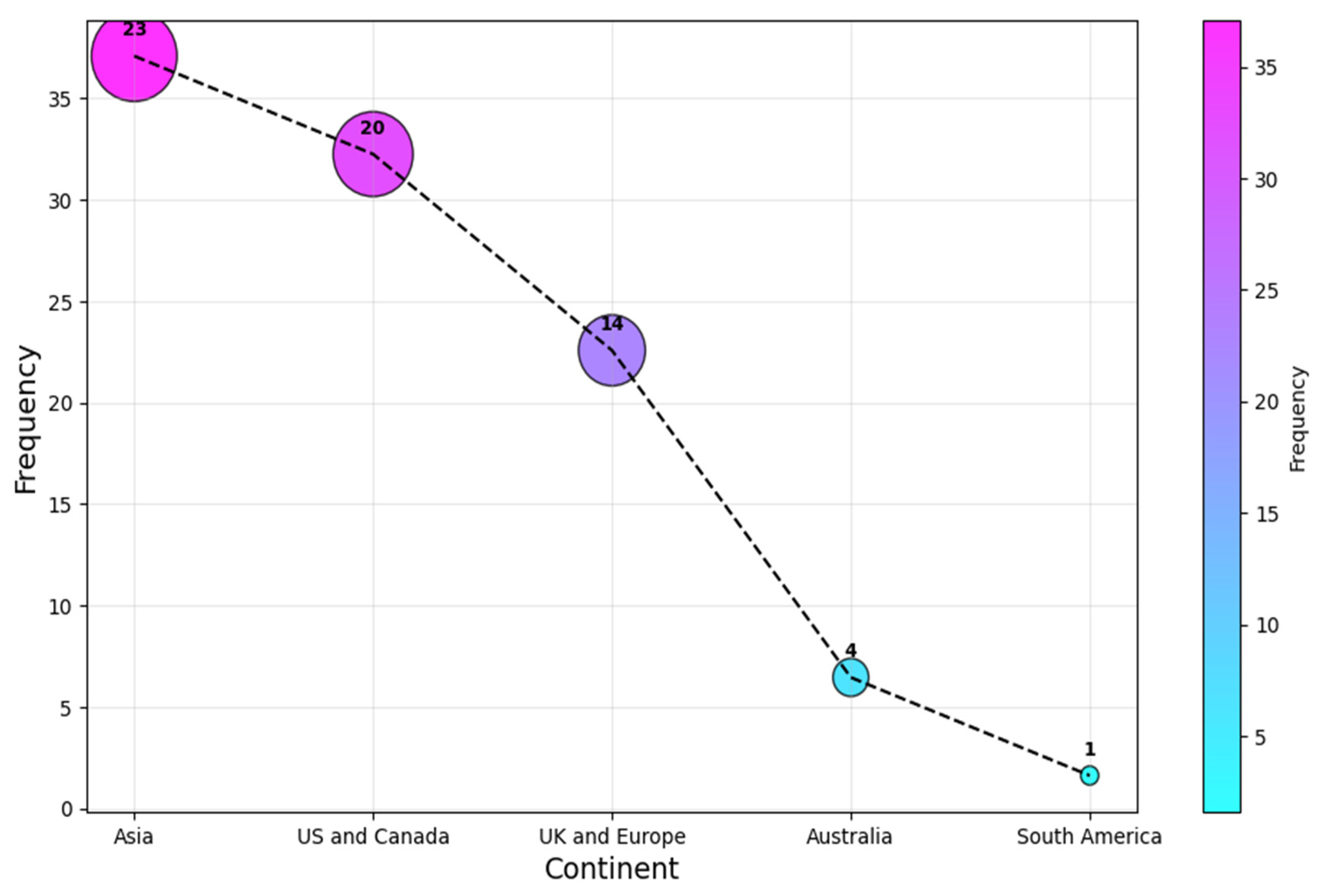

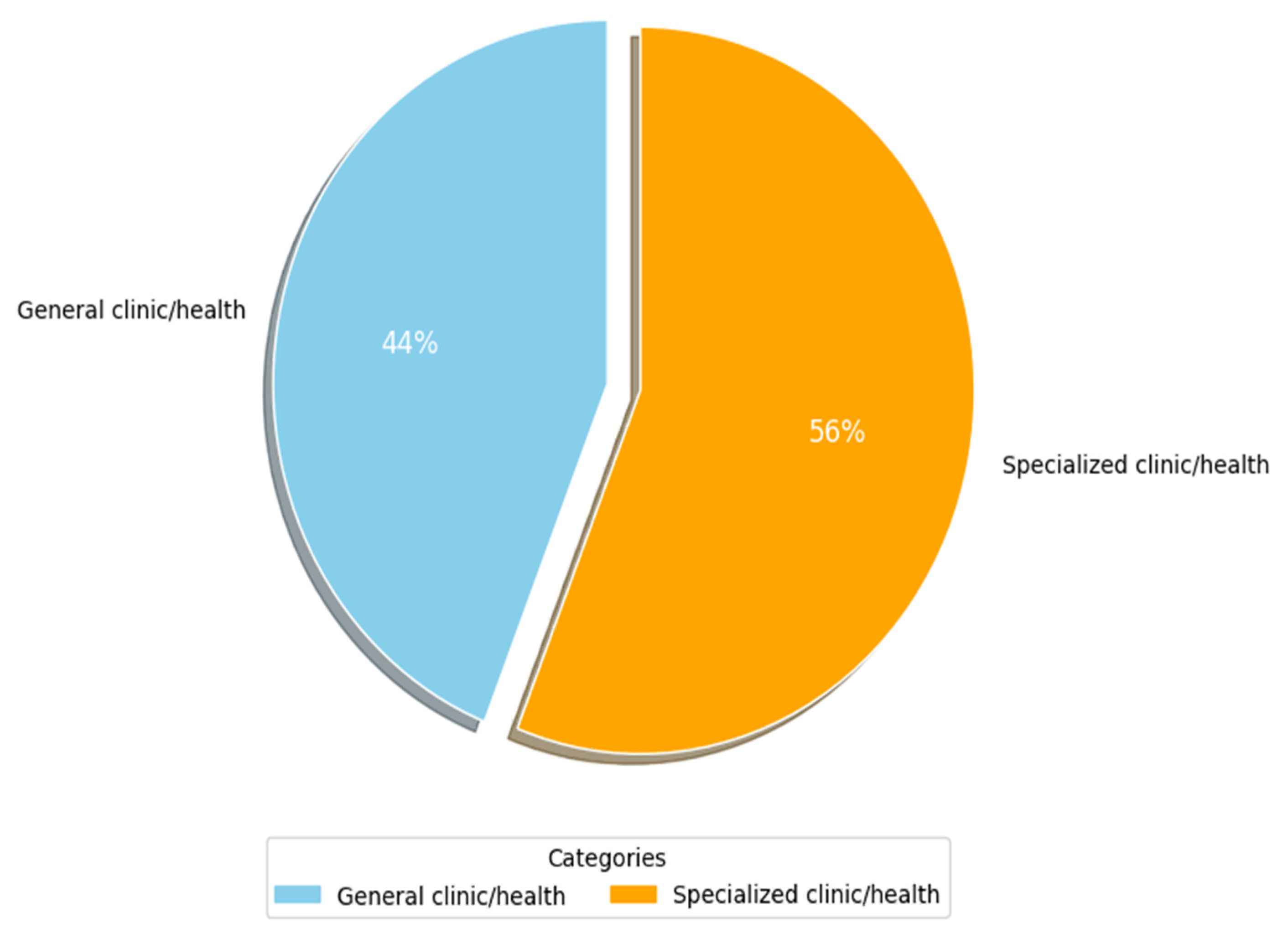

| Aspect | SaMD | AI-SaMD |
|---|---|---|
| Technology | Traditional programming | AI algorithms (machine learning and natural processing language) |
| Adaptability | Static functionality defined at deployment | Dynamic, with potential for continuous learning and improvement |
| Regulatory | Straightforward regulatory approval process | Requires more (e.g., transparency and bias mitigation). |
| Validation | Before deployment | Ongoing validation due to learning algorithms |
| Examples | (a) MRI Image Viewing Application; (b) Computer-Aided Detection (CAD) Software (https://www.fda.gov/medical-devices/software-medical-device-samd/what-are-examples-software-medical-device?utm_source=chatgpt.com (accessed on 30 March 2025)) | (a) Arterys Cardio DL to analyze cardiovascular images; (b) EnsoSleep to diagnose sleep disorders (https://medicalfuturist.com/); (c) Apple Watch Sleep Apnea Detection Feature (https://www.investopedia.com/apple-gets-fda-approval-for-smartwatch-sleep-apnea-detection-feature-8713323?utm_source=chatgpt.com (accessed on 30 March 2025)) |
| ID | Research Question | Motivation |
|---|---|---|
| RQ1 | What are the most prominent publication venues for research in AI-SaMD? | To help researchers in finding the main conferences and journals in the AI-SaMD field to publish their research in a suitable outlet |
| RQ2 | Who are the active countries on AI-SaMD? | To highlight the most active countries in AI-SaMD research, providing insights into key contributors and prominent researchers in the field |
| RQ3 | RQ3.1: How do the selected studies conduct their research? | To determine the research design of the study and how the authors analyzed their data |
| RQ3.2: In what environments are AI-SaMD studied? | To identify the specific types of clinics and diseases targeted by the studies | |
| RQ4 | What are the key challenges in the AI-SaMD’s implementation? | This question addresses the current challenges and explores how they impact the development process |
| RQ5 | What recommendations have researchers provided to the AI-SaMD community for practical application? | This RQ identifies the common recommendations of researchers that could help the AI-SaMD’s community and help researchers in future work |
| Library | Discovered Studies | Inaccessible Studies | Repeated Studies | Exclusive Studies | Primary Studies |
|---|---|---|---|---|---|
| IEEE | 4 | 0 | 2 | 0 | 2 studies: [11,12] |
| PubMed | 19 | 0 | 1 | 0 | 18 studies: [13,14,15,16,17,18,19,20,21,22,23,24,25,26,27,28,29,30] |
| Semantic Scholar | 41 | 2 | 14 | 9 | 16 studies: [31,32,33,34,35,36,37,38,39,40,41,42,43,44,45,46] |
| Springer | 25 | 2 | 6 | 1 | 16 studies: [47,48,49,50,51,52,53,54,55,56,57,58,59,60,61,62] |
| WoS | 39 | 2 | 25 | 2 | 10 studies: [63,64,65,66,67,68,69,70,71,72] |
| Total | 128 | 6 | 48 | 12 | 62 |
| Library | Journal | Conference | Workshop | Book Chapter | Total |
|---|---|---|---|---|---|
| IEEE | 0 | 2 | 0 | 0 | 2 |
| PubMed | 18 | 0 | 0 | 0 | 18 |
| Semantic Scholar | 13 | 1 | 1 | 1 | 16 |
| Springer | 16 | 0 | 0 | 0 | 16 |
| WoS | 10 | 0 | 0 | 0 | 10 |
| Total | 57 | 3 | 1 | 1 | 62 |
| Venue | Freq. |
|---|---|
| Korean Journal Radiology | 3 |
| npj Digital Medicine | 2 |
| International Journal of Computer Assisted Radiology and Surgery | 2 |
| Healthcare—MDPI | 2 |
| Australian Journal of Dermatology | 2 |
| Emergency Radiology | 2 |
| # | Major Clinic | Subspecialty | Freq. | % | Study Number and Sub-Subspecialty |
|---|---|---|---|---|---|
| 1 | General | N/A | 26 | 42 | [12,13,17,19,20,21,22,23,24,28,30,32,34,36,38,39,40,41,44,52,55,56,57,62,64,67,71] Regulatory frameworks [12,13,19,20,21], general surgery [17], public health [36], and effect of AI in healthcare [54] |
| 2 | Subspecialty | Radiology | 11 | 17.7 | [16,18,24,27,31,42,58,59,60,63,70] Neuroradiology [15], chest X-ray [18], MRI [30], and trauma radiology [60] |
| 3 | Clinical administration | 5 | 8.1 | [35,43,45,48,66] Decision making [35,43,45,48,66] and workflow [48] | |
| 4 | Clinical trials | 3 | 4.8 | [11,50,54] | |
| 5 | Ophthalmology | 3 | 4.8 | [14,15,46] | |
| 6 | Cancer | 3 | 4.8 | [29,33,72] | |
| 7 | Dermatology | 2 | 3.2 | [37,68] | |
| 8 | Geriatric and children care | 2 | 3.2 | [49,61] | |
| 9 | Cardiovascular | 2 | 3.2 | [25,69] |
| # | Challenge | Description | Study Number | Freq. | % |
|---|---|---|---|---|---|
| 1 | Regulatory Approval | AI-SaMD must meet stringent regulatory requirements (e.g., FDA and EMA) for safety and efficacy, often challenged by the dynamic and adaptive nature of AI models. | [11,12,13,16,19,20,22,25,26,27,28,29,30,32,34,35,36,37,38,40,41,43,44,45,50,52,54,57,61,62,63,64,67,71] | 34 | 54.8 |
| 2 | “Black-box” AI Models/Transparency | Complex AI algorithms, especially deep learning, lack interpretability, making it difficult to explain how decisions are made, which regulators and clinicians demand. | [16,17,18,24,27,30,31,35,50,51,54,55,56,57,58,59,60,61,68,70,72] | 21 | 33.9 |
| 3 | Algorithmic Bias | Training data biases can lead to AI models performing unequally across demographic groups, risking unfair or unsafe outcomes. | [21,24,26,27,30,35,37,38,40,45,46,55,56,59,61,65,66,67,68,69] | 20 | 32.3 |
| 4 | Performance and Security | AI-SaMD must reliably operate under varying conditions and safeguard against cybersecurity threats that could compromise patient safety. | [13,16,21,22,28,30,41,44,45,46,48,56,57,62,65,69,71] | 17 | 27.4 |
| 5 | Research Challenges | Limited access to high-quality, diverse, and sufficiently large datasets can hamper model training and validation, impacting performance and generalizability. | [11,18,27,28,29,31,37,40,41,42,45,50,58,60,67,69] | 16 | 25.8 |
| 6 | Liability and Accountability | Ambiguity around who is responsible for errors (developer, deployer, or clinician) complicates legal and ethical accountability in AI-SaMD. | [14,16,18,27,30,34,51,65,67] | 9 | 14.5 |
| 7 | Integration/Interoperability | AI-SaMD must seamlessly integrate with existing clinical workflows, EHRs, and other systems for practical deployment. | [28,30,47,48,52,53,57,63,70] | 9 | 14.5 |
| 8 | Continuous Learning and Evolution | AI models that update with new data post-deployment require rigorous monitoring to ensure consistent compliance with safety and regulatory standards. | [13,21,24,26,39,43,68,69,70] | 9 | 14.5 |
| 9 | Human-Centric | Critical human/organizational factors can impede the effective integration of AI-SaMD into practice. They emphasize the need for strategies addressing trust, understanding, and collaboration to bridge the gap between technology and real-world application. | [15,35,36,40,45,54,60,63] | 8 | 12.9 |
| 10 | Software Business | This includes software updating, vendor support, system documentation, licensing, and software upgrading [74]. Such activities must be carefully managed to maintain compliance, functionality, and compatibility while avoiding system disruptions. | [19,46,52,62] | 4 | 6.5 |
| # | Recommendation | Description | Study Number | Freq. | % |
|---|---|---|---|---|---|
| 1 | Addressing regulatory challenges in AI-SaMD | As mentioned in answering RQ4, developed countries like the US and Europe have already adopted regulatory frameworks. Additional frameworks exist elsewhere, such as the PMDA (Pharmaceuticals and Medical Devices Agency (https://www.pmda.go.jp/english/ (accessed on 30 March 2025)) in Japan. In the near future, we should focus on the less-developed countries, especially those not depicted in Figure 4 and Figure 5, that face a crucial decision. Should they adopt an existing regulatory framework or develop their own? Each option carries distinct national implications. | [12,15,18,19,20,21,22,23,26,27,29,30,36,37,38,39,40,41,43,44,45,52,54,55,57,61,62,64,66,67,69,71] | 32 | 51.6 |
| 2 | AI algorithms | Medical malpractice liability associated with the use of AI in clinical practice remains unresolved, with legal frameworks still in flux. Furthermore, interpretable AI is preferred when it achieves performance comparable to black-box models. If not, black-box models might be used, but only after extensive testing and clinical trials. This research direction aims at conducting a comprehensive comparison between AI-SaMD black-box and white-box algorithms across various quality attributes. Additionally, it is crucial to establish minimum requirements for the use of black-box algorithms in scenarios where they are the only viable option. | [24,30,31,32,34,35,45,46,48,53,59,61,62,65,68,69,72] | 17 | 27.4 |
| 3 | Interdisciplinary partnership and training | To enhance the adoption of AI-SaMD, fostering stronger partnerships between academia and industry is crucial. Equally important is equipping clinicians with targeted education and training on the principles, applications, and limitations of AI-SaMD, ensuring they can confidently integrate these tools into clinical practice and academic programs by institution. Increased collaboration among diverse stakeholders—including clinicians, IT specialists, regulators, and legal experts—can further accelerate progress. By sharing AI-SaMD methods, skills, experiences, and data, this collaborative approach can foster comparative research among national and international health institutes. | [16,17,36,41,45,49,50,55,57,63,66,69] | 12 | 19.4 |
| 4 | Other recommendations | Integration with the other enterprise systems | [33,41,51,54,60] | 5 | 8.1 |
| More validation | [25,28,42,47] | 4 | 6.5 | ||
| Enhancing AI-SaMD publication | [58,60,70] | 3 | 4.8 |
Disclaimer/Publisher’s Note: The statements, opinions and data contained in all publications are solely those of the individual author(s) and contributor(s) and not of MDPI and/or the editor(s). MDPI and/or the editor(s) disclaim responsibility for any injury to people or property resulting from any ideas, methods, instructions or products referred to in the content. |
© 2025 by the authors. Licensee MDPI, Basel, Switzerland. This article is an open access article distributed under the terms and conditions of the Creative Commons Attribution (CC BY) license (https://creativecommons.org/licenses/by/4.0/).
Share and Cite
Ebad, S.A.; Alhashmi, A.; Amara, M.; Miled, A.B.; Saqib, M. Artificial Intelligence-Based Software as a Medical Device (AI-SaMD): A Systematic Review. Healthcare 2025, 13, 817. https://doi.org/10.3390/healthcare13070817
Ebad SA, Alhashmi A, Amara M, Miled AB, Saqib M. Artificial Intelligence-Based Software as a Medical Device (AI-SaMD): A Systematic Review. Healthcare. 2025; 13(7):817. https://doi.org/10.3390/healthcare13070817
Chicago/Turabian StyleEbad, Shouki A., Asma Alhashmi, Marwa Amara, Achraf Ben Miled, and Muhammad Saqib. 2025. "Artificial Intelligence-Based Software as a Medical Device (AI-SaMD): A Systematic Review" Healthcare 13, no. 7: 817. https://doi.org/10.3390/healthcare13070817
APA StyleEbad, S. A., Alhashmi, A., Amara, M., Miled, A. B., & Saqib, M. (2025). Artificial Intelligence-Based Software as a Medical Device (AI-SaMD): A Systematic Review. Healthcare, 13(7), 817. https://doi.org/10.3390/healthcare13070817







